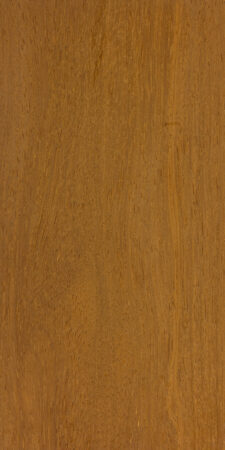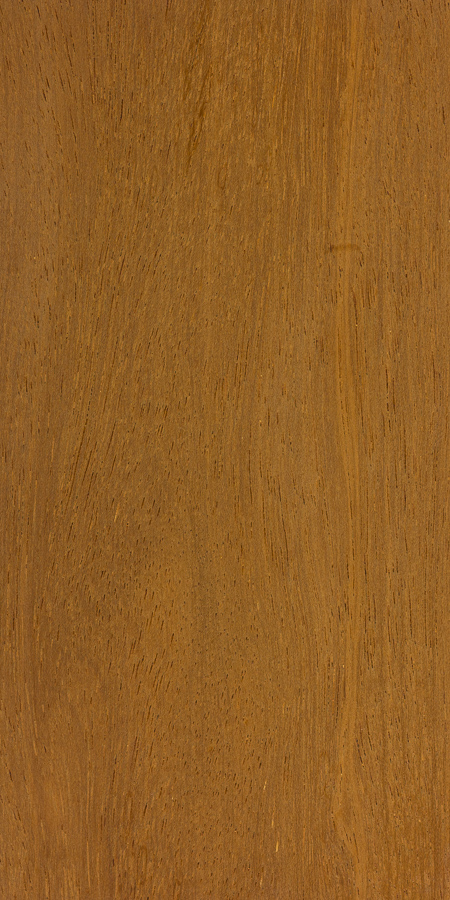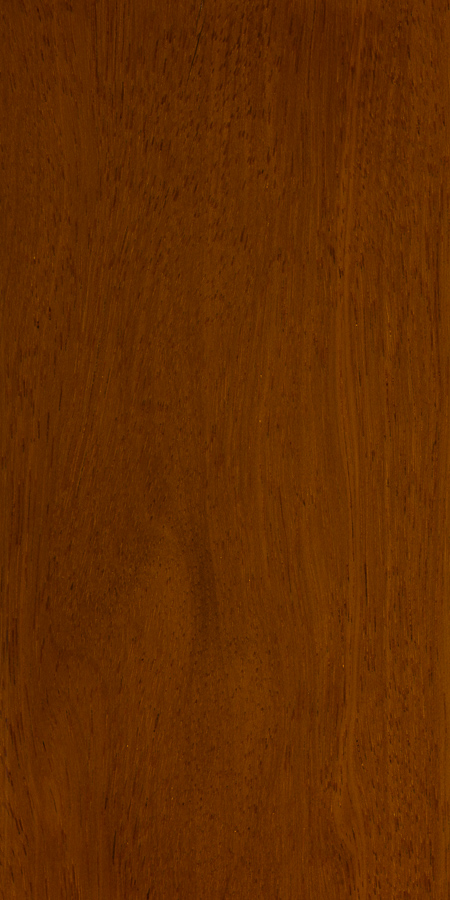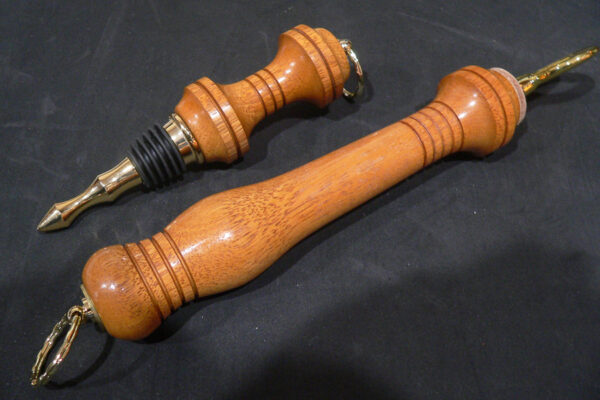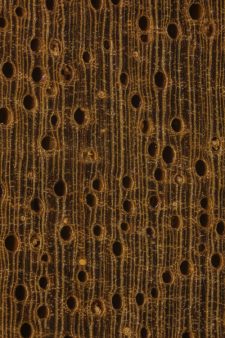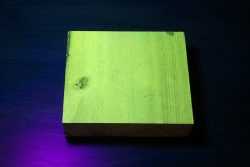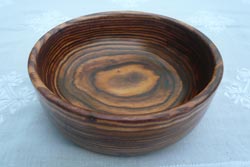DATA SOURCE(S): 1,6,8,14
Common Name(s): Opepe, bilinga
Scientific Name: Nauclea diderrichii
Distribution: West and Central Africa
Tree Size: 100-160 ft (30-50 m) tall,
3-6 ft (1-2 m) trunk diameter
Average Dried Weight: 48.2 lbs/ft3 (770 kg/m3)
Specific Gravity (Basic, 12% MC): .63, .77
Janka Hardness: 1550 lbf (6890 N)
Modulus of Rupture: 16870 lbf/in2 (116.3 MPa)
Elastic Modulus: 1921000 lbf/in2 (13.25 GPa)
Crushing Strength: 9480 lbf/in2 (65.3 MPa)
Shrinkage: Radial: 4.8%, Tangential: 8.1%,
Volumetric: 12.6%, T/R Ratio: 1.7
Color/Appearance: Heartwood is golden brown or orange, darkening over time. Sapwood is light yellow and is clearly demarcated from heartwood.
Grain/Texture: Grain is generally interlocked and/or irregular. With a uniform coarse texture with good natural luster.
Rot Resistance: Rated as moderately durable to very durable; heartwood is reported to have moderate to good resistance to insects and marine borers.
Workability: Moderately easy to work, though care must be taken on quartersawn surfaces or where the grain is highly irregular to avoid tearout. Poor bending properties. Turns, glues, and finishes well.
Odor: No characteristic odor.
Allergies/Toxicity: Although severe reactions are quite uncommon, opepe has been reported as a sensitizer. Common reactions include skin, eye, and respiratory irritation, as well as fever, headaches, and other nervous system effects in some individuals. See the articles Wood Allergies and Toxicity and Wood Dust Safety for more information.
Pricing/Availability: Usually available in large sizes as structural lumber, boards, flooring planks, or turning/craft blanks. Prices are in the mid range for an imported hardwood.
Sustainability: This wood species is not listed in the CITES Appendices, but is reported by the IUCN as being near threatened. Technically it doesn’t meet the Red List criteria of a vulnerable or endangered species, but is close to qualifying and/or may qualify in the near future. (Opepe was listed as vulnerable from 1998 to 2021, but has since been downgraded.)
Common Uses: General construction, flooring, furniture, cabinetry, boatbuilding, docks, carving, and turned objects.
Comments: Opepe is used in marine applications, and is sometimes used in place of oak (except in cases where the wood needs to be bent, as it does not respond well to steam bending). Its golden orange color, borer resistance, and large available sizes make it a unique choice for exterior applications.
Images: Drag the slider up/down to toggle between raw and finished wood.
A special thanks to Steve Earis for providing the wood sample, and Michael Savchak for providing the turned photo of this wood species.
Identification: See the article on Hardwood Anatomy for definitions of endgrain features.
Porosity: diffuse porous
Arrangement: exclusively solitary, sometimes loosely arranged in diagonal or radial patterns not too dissimilar to eucalypts
Vessels: large to very large, few to very few; yellowish deposits occasionally present
Parenchyma: diffuse-in-aggregates
Rays: narrow width, normal spacing; some rays are just barely visible without magnification
Lookalikes/Substitutes: Sometimes used in place of oak for exterior marine applications (though the two are not easily confused).
Notes: Heartwood fluoresces faint to medium yellow/green under blacklight.
Related Content:

